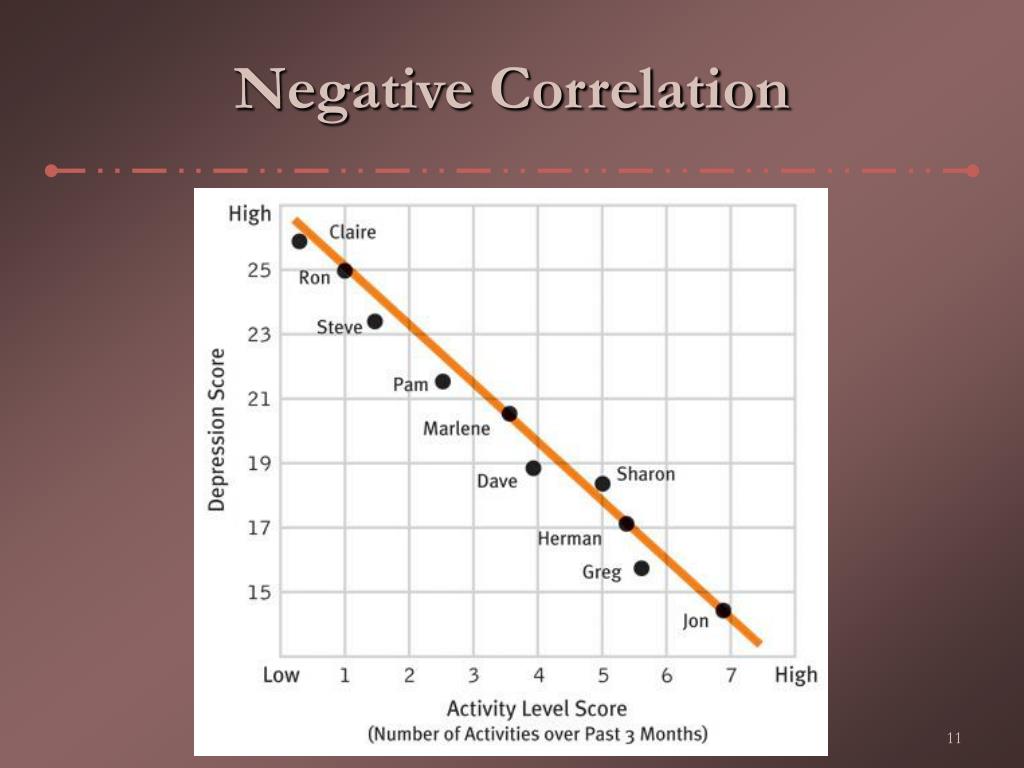

#Negative correlation how to
Learn how to set up and use this feature with our help file on correlation analysis.Ĭomplete Likert Scale Questions, Examples and Surveys for 5, 7 and 9 point scales. How to use correlation analysis in your surveys? There can be only three potential broad outcomes of the analysis. The findings can range from -1.00 to 1.00. Simple metrics: Research findings are simple to classify.Uses for further studies: Researchers can identify the direction and strength of the relationship between two variables and later narrow the findings down in later studies.A good starting point for research: It proves to be a good starting point when a researcher starts investigating relationships for the first time.It tends to be more relevant to everyday life. Awareness of the behavior between two variables: A correlation helps to identify the absence or presence of a relationship between two variables.Some of the most notorious benefits of correlation analysis are: To perform reliable correlation analysis, it is essential to make in-depth observations of two variables, which gives us an advantage in obtaining results. Practical simplicity is undoubtedly one of its main advantages. One of the tools to infer whether such a link exists is correlation analysis. In statistics, correlation refers to the fact that there is a link between various events. Researchers measure the increase/decrease in sales due to a specific marketing campaign. Marketers use it to measure the effectiveness of advertising. For example, correlation analysis is used to measure the correlation between the patient's blood pressure and the medication used. Here, the researcher can't manipulate individual variables. Weak/Zero correlation : No correlation exists when one variable does not affect the other.įor example, there is no correlation between the number of years of school a person has attended and the letters in his/her name.Ĭorrelation analysis is used to study practical cases.An increase in one variable leads to a decrease in the other variable and vice versa.įor example, increasing the speed of a vehicle decreases the time you take to reach your destination. Negative correlation: A negative correlation between two variables means that the variables move in opposite directions.An increase in one variable leads to an increase in the other variable and vice versa.įor example, spending more time on a treadmill burns more calories. Positive correlation: A positive correlation between two variables means both the variables move in the same direction.Let's look at examples of each of these three types: Example of correlation analysisĬorrelation between two variables can be either a positive correlation, a negative correlation, or no correlation. If you want to delve into this topic, we recommend you consult our guide: Pearson Correlation Coefficent. The correlation coefficient is the unit of measurement used to calculate the intensity in the linear relationship between the variables involved in a correlation analysis, this is easily identifiable since it is represented with the symbol r and is usually a value without units which is located between 1 and -1. One of the statistical concepts that is most related to this type of analysis is the correlation coefficient. On the other hand, a negative correlation means that when one variable increases, the other decreases and vice-versa. There is a positive correlation between two variabls when an increase in one variable leads to the increase in the other. They try to identify the relationship, patterns, significant connections, and trends between two variables or datasets. When it comes to market research, researchers use correlation analysis to analyze quantitative data collected through research methods like surveys and live polls. A high correlation points to a strong relationship between the two variables, while a low correlation means that the variables are weakly related. Simply put - correlation analysis calculates the level of change in one variable due to the change in the other. Correlation analysis in research is a statistical method used to measure the strength of the linear relationship between two variables and compute their association.


 0 kommentar(er)
0 kommentar(er)
